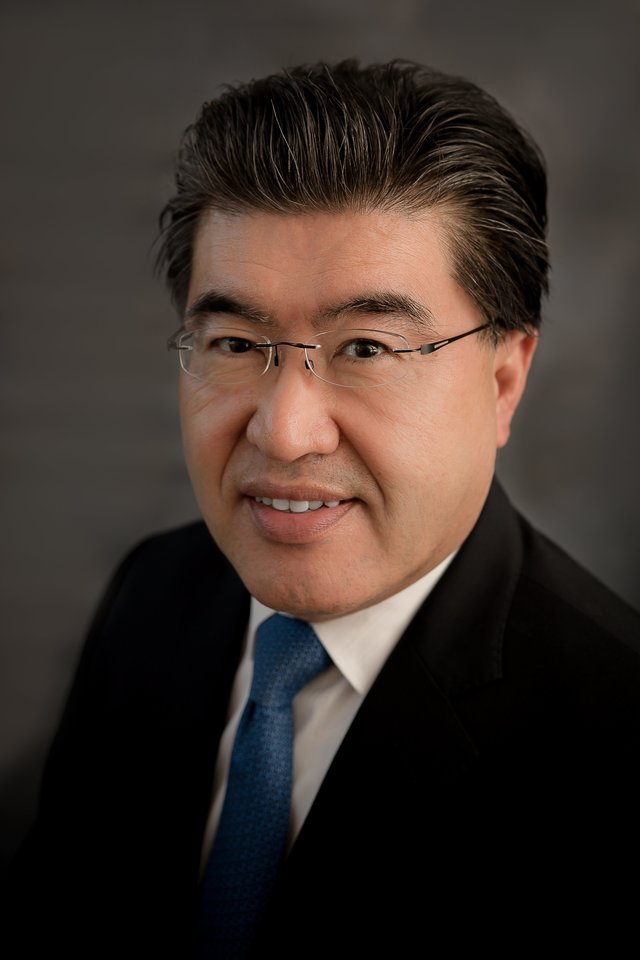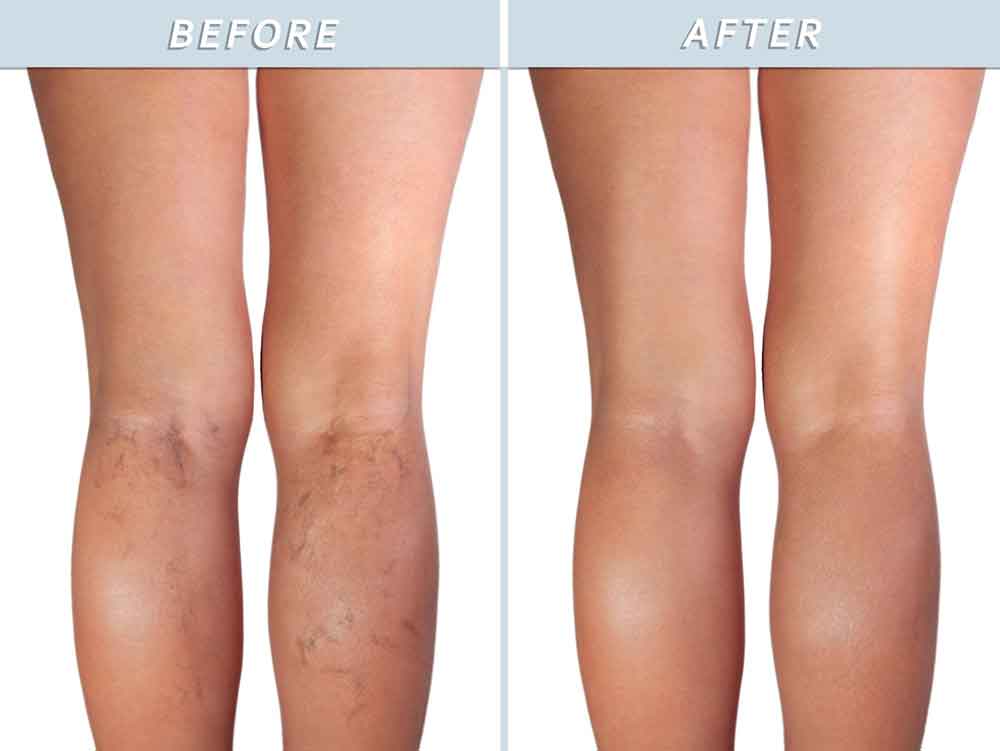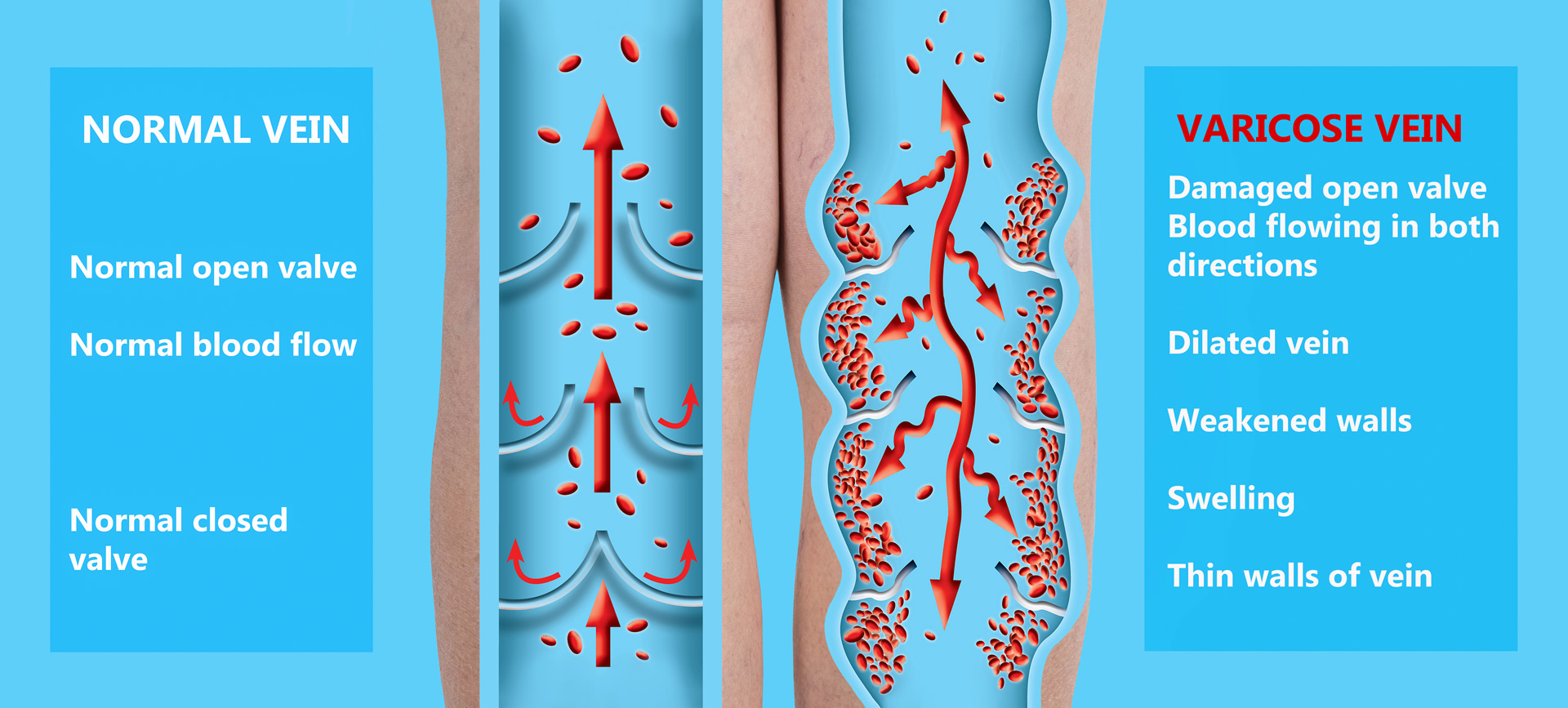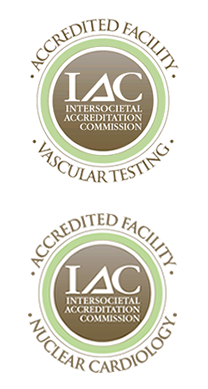OUR SERVICES
Vein Ablation
Varicose veins and spider veins can be unsightly and cause us to feel less than our best. However, these conditions are far more than just cosmetic issues. They can be symptoms of more serious problems that can lead to major complications. Large veins visible just under the surface of your skin, mild swelling of your ankles and feet, throbbing, cramping or “heavy” legs, or clusters of red veins on your upper body or face or legs may be signs of weakened veins caused by venous insufficiency. Vein ablation is used to treat varicose veins and spider veins and prevent the drastic complications that arise as a result. This treatment can have your legs looking and feeling younger in no time.

Stanley J. Shin, MD, FACC, FACP
Invasive Cardiologist & Vein Specialist
Causes of varicose veins and spider veins includes:
Family history of varicose veins
Being overweight
Being pregnant
Not enough exercise
Smoking
Standing or sitting for long periods of time
Women over 50 years old have a higher risk of developing CVI
Endovenous Ablation: The Non-invasive Solution
Chronic venous insufficiency (CVI) is a condition in which the valves of the veins of the lower extremities fail to properly channel blood back to the heart. This causes slowed blood flow back to the heart. This leads to pooling of the blood in the veins which causes the veins to distend and eventually weakens the walls and begins to weaken the valves further down. These weakened vein walls cause veins to become more visible on the surface of the skin. These visible veins are what we call varicose veins and telangiectasia (“spider veins”). Weakened blood flow through the valves can also lead to loss of oxygen and nutrients to the skin which beget more serious complications including eczema, inflammation, blood clots, deep vein thrombosis, skin ulcers, and, in the most extreme cases, loss of limbs or life.

Varicose Veins:
Varicose veins are more than just unsightly blue leg veins. They cause damage to our body by failing to pump blood back to our hearts properly, and they come with a variety of tell-tale signs.
Symptoms include:
- Large veins that you can see just under the surface of your skin.
- Mild swelling of your ankles and feet.
- Painful, achy, or “heavy” legs.
- Throbbing or cramping in your legs.
- Itchy legs, especially on the lower leg and ankle, which is sometimes misdiagnosed as dry skin.
- Bluish discoloration of the skin in the area around the lower leg and ankle.
Telangiectasias:
Telangiectasias are clusters of small red veins which usually appear just below the surface of the skin usually forming on the upper body or legs. Often called “spider veins,” they are recognizable by their tree branch or web-like patterned clusters of red veins on the face or legs.
Diagnosis
It is usually easy to diagnose varicose and spider veins from their appearance. You may already by examining your legs that you are battling this problem, but sometimes the symptoms are more subtle. Chronically swollen legs that feel “heavy” and achy, or skin discoloration around the ankle are just two of many potential symptoms that you may not even notice. Your cardiologist can identify whether you do indeed have varicose veins that need to be treated. Determining how to best treat your varicose or spider veins can be done with a simple physical examination and/or ultrasound. The doctor will look at your legs and feet while you are standing to check for any swelling. He or she will then likely ask for you to describe any discomfort or pain that you may be experiencing. If necessary, an ultrasound may be ordered to check how the bloodflow is within the area. Ultrasounds are non-invasive and can provide your doctor with a full picture of how well the blood is moving through those veins and how serious the problem is. This is a simple, painless procedure that will help your cardiologist determine the best course of action.

Treatment
In recent years, many new and innovative treatment options have been developed. Doctors are now able to repair the damaged veins with a minimally invasive outpatient vein ablation treatment that requires only local anesthetic. Ablation is the process of using heat to damage the tissue in order to intentionally form scar tissue. While this may sound intimidating, the procedure the worst of the discomfort is the small prick of the anesthetic being injected into the area. Once the area is numb, the doctor begins the radiofrequency (rf) alblation. This is a modern treatment for varicose veins and spider veins in which your cardiologist will insert a catheter into the vein. When the catheter is activated, a radiofrequency emitted generates heat within the vein which causes the vein to contract and develop scar tissue, closing off the vein to prevent further pooling as a result of the weakened wall. Once the blood flow is cut off from the weakened vein, blood flow to the heart can resume normally. The vein will no longer be at risk for pooling, clots, swelling, and damaging the tissue around it. The larger deep veins will continue to provide the surrounding area with the oxygen and nutrients the area.
What to Expect After Vein Ablation
Because they are minimally invasive, vein ablation procedures also have a very short recovery time. Side effects from vein ablation are typically very mild, and include some mild swelling and tingling that usually subsides within a few days. Following the procedure, you may resume normal activity immediately. You will need to wear a compression sock for up to two weeks to minimize swelling and support proper blood flow. Air travel, strenuous activity, and prolonged sitting are not recommended following the procedure. It is best to wait until your doctor releases you for those types of activities. When compared to traditional treatments, vein ablation treatments are more effective, have fewer complications, and are associated with much less pain during and following the procedure.
Statesboro’s Trusted Cardiac, Vascular & Vein Specialists
Located at our 5 Grady Johnson Road office location and staffed daily by one of our cardiologists, we offer our patients appointments for urgent cardiac or peripheral vascular concerns, pre-operative clearance and noninvasive testing.

